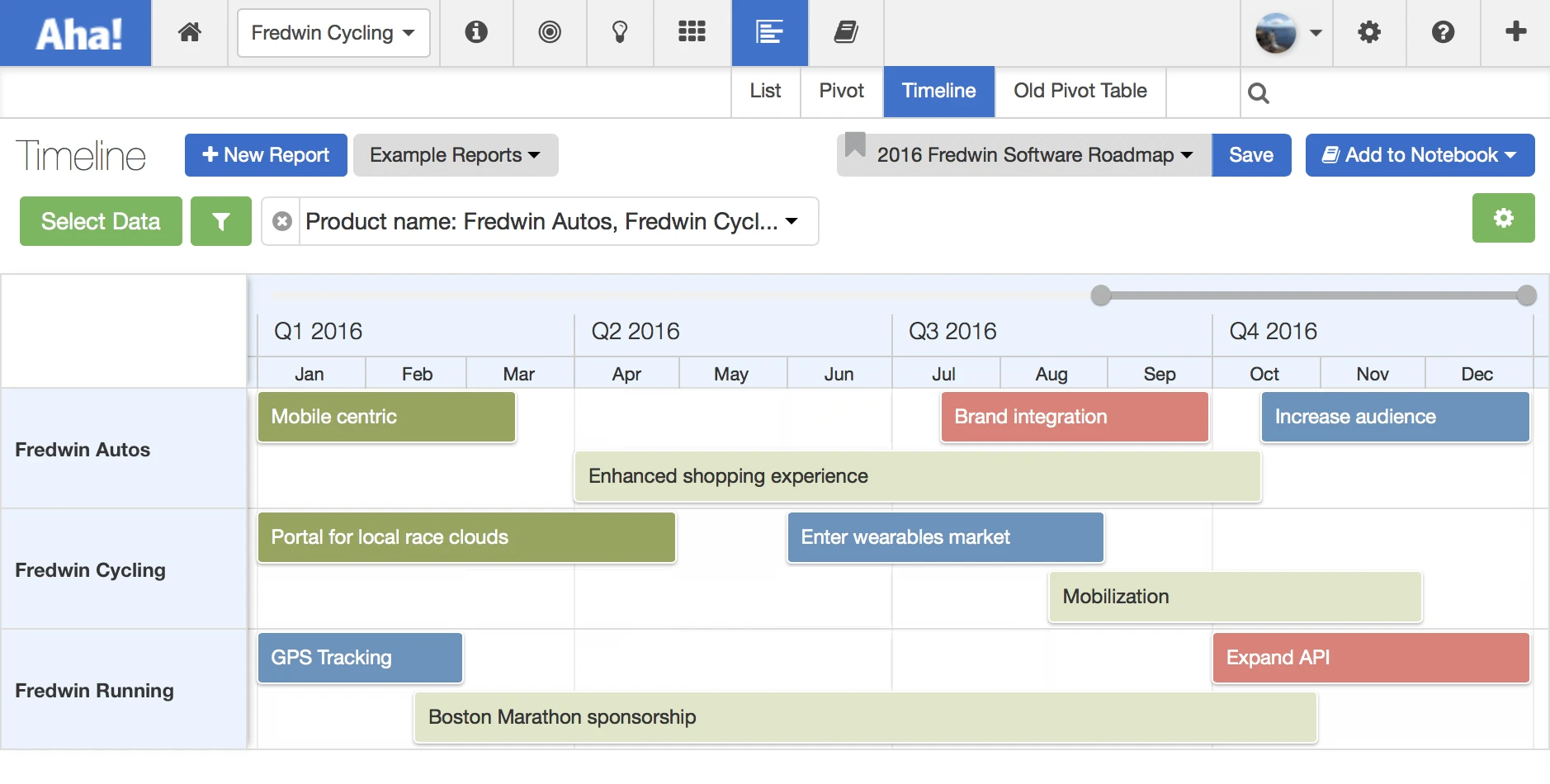
The Product Roadmap vs. the Project Roadmap
It’s amazing what you learn when you stop talking at work and start listening. This is particularly true when you are meeting with the world’s best innovators and product builders. We get to practice our listening skills a lot because at Aha! we speak with hundreds of product managers each week.
To our own surprise, we consistently hear people tell us that they found Aha! while searching for “a great project management tool.”
We love hearing this — but we always clarify that there is a big difference between product and project management. Especially when it comes to roadmaps.
While there are some similarities, there are also many key differences between product roadmaps and project roadmaps. And understanding them starts with knowing the difference between a product and a project.
A product is a good or service which is provided to a group of users. Products can be anything ranging from physical items to software applications to services that are delivered to an end user.
A project is a series of tasks or plans that are implemented over a set period of time. Once its outcome has been accomplished, the project is complete.
Products and projects are connected in many ways. The main way is that a product often contains many projects before it is ready to be launched or updated. Each project has a clear timeline with designated start and end dates. The end date denotes when the project is accomplished. Some may even consider “sprints” to be mini-projects.
However, a product does not have a clear start and end date. Instead, the product will be continually improved as feedback is collected and the product team prioritizes what to build based on what will create the most value.
The overall purpose The biggest difference between product roadmaps and project roadmaps is the overall purpose of each roadmap and how that relates to organizational goals.
A product roadmap is used to communicate the product’s strategic path to achieve business goals. Product roadmaps can be used by product teams at diverse organizations. Software companies and toy companies both produce products. So, product teams within both companies can use product roadmaps to plan their work. The core similarity between product roadmaps is that they are typically used for products and services that are sold to customers.
A project roadmap is more tactical in nature and used chiefly to communicate the tasks needed to complete the project. “Project” in this case can refer to anything. Project roadmaps can be used to implement a new recruiting service or deploy an email server. The core similarity between project roadmaps is that they are often used to plan internal efforts.
Components Another area where these two types of roadmaps often differ is in their components. Product managers have different goals than project managers. So it is natural that a product roadmap will contain different content than a project roadmap.
Product roadmaps often include the following types of components:
Product goals
Strategic initiatives
Key releases and features that deliver on the goals
Master features (or epics)
Major users stories or features
Overall timeline
Project roadmaps often include these types of components:
Project goals and objectives
Important milestones and tasks
Resource allocation
Project timeline
Potential risks
The focus area for each roadmap is clear. The product roadmap provides the plan for achieving the product goals, which are often related to business goals. The project roadmap also lays out a plan but is typically focused on the timeline for a specific project.
Examples Product roadmaps typically include high-level strategic initiatives, key upcoming releases, and features which will be used to drive towards those short-term and long-term goals. The product roadmap communicates the product’s overall direction to internal and external stakeholders. It is also used to determine priorities and ensure that plans will support the key business goals.
In comparison, a project roadmap is a plan which takes the project objectives and provides a timeline of specific tasks and milestones which must be achieved before the project is accomplished. Project roadmaps typically consist of the project goals; the key milestones and tasks to achieve those goals; and a timeline that determines the overall schedule.
Since a project has a fixed start and end date, it is sometimes visualized like the release above. This allows stakeholders to have a complete picture of the timeline and expectations so that everyone understands the scope of the project.
The creation process A product manager typically leads the roadmapping process. She works with cross-functional teams including engineering, sales, marketing, and the executive team to build the plan which will meet key business goals and objectives. During this process, it is important for a product manager to begin with a goal-first approach towards their product. As the roadmap is created, it will cover high-level areas that will contribute to the product’s success.
On the other hand, a project manager typically creates the project roadmap. The project manager is less concerned with product goals, as their own goal is to complete their project within its specified timeline. Project roadmaps consider overall resources and team capacity, as well as the milestones which must be reached to deliver the project.
The sharing process It is essential to share both types of roadmaps with internal and external teams so that stakeholders can stay informed of the product or project’s progress. Keeping stakeholders involved allows teams to operate more effectively.
Sharing product roadmaps helps teams understand the overall strategy of the product, as well as the details around implementing features and communicating key benefits to customers. This allows internal teams to stay focused and informed of how upcoming features will impact the customer.
Sharing project roadmaps helps internal teams understand the timeline for specific milestones of the project. Projects often have budgetary or resource-related constraints. Communicating the project roadmap allows cross-functional teams to understand how these factors relate to their own projects and teams.
Both product and project roadmaps are both essential for business. They keep teams on the same page towards building something lasting.
Great products are the result of having a breakthrough idea and explaining to the team where you are headed. This means great product teams know how to build and manage product and project roadmaps. And they know when to use each one.





